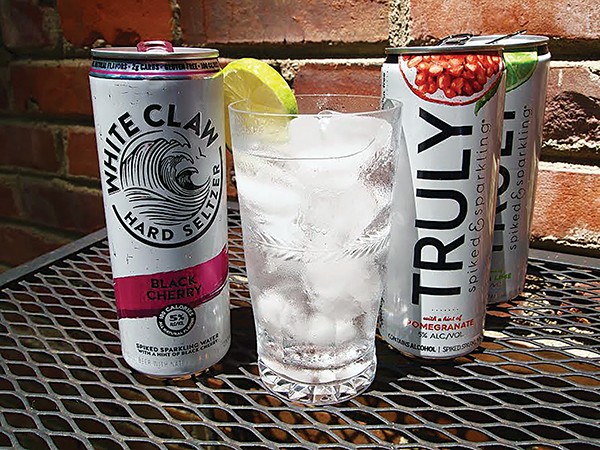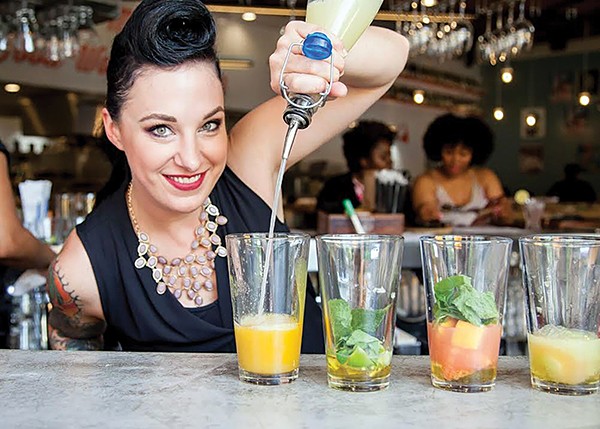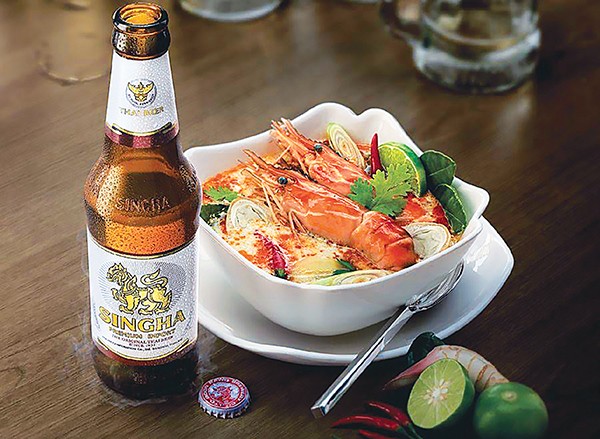I had one of those fine summer head colds the other week, which caused me to drink enough La Croix sparkling water to float an Adams class destroyer. So, imagine my surprise when I learned of something called Hard Seltzer. Like La Croix but at 5 percent ABV, it must work wonders for an infection. Probably not too good for the liver, but the Ying and Yang are both part of life.
So down to Joe’s I went, where I understand the stuff is flying off the shelves, and in this blessed heat, I can see why. I picked out a White Claw Black Cherry and two flavors from Truly — lime and pomegranate.
How were they? The short answer is that they were all delicious.
After that, a review gets tricky for the simple reason that they are exactly what they say they are — alcoholic, lightly flavored fizzy water. And they taste like it. Even saying, “seltzer with a kick” is wide of the mark, because this stuff has absolutely no kick. As we sampled, Mrs. M. was reminded of that Clearly Canadian water which was everywhere a few years ago.
The specs are simple: At 5 percent ABV, they have more alcohol than a light beer; they’re more in the neighborhood of a craft summer brew. Both the White Claw and the Truly have only 100 calories per 12 ounce can. White Claw has a little more obvious flavor, but also has two grams of sugar to Truly’s one.
In the Pro column: They are perfect for the summer, light, refreshing, and they go down easy. In the Con column: They go down way too easy.

As I mentioned, the ABV is similar to light craft beer, so imagine drinking 12 of those. This is where you scoff and say “I won’t drink 12 of those things!” Well, you say that, but try sitting through a Live at the Garden show while Boy George sweats his glitter off. If I’d had known these things existed then, I’d have put away half a case without turning around.
I’m about to pack a daughter off to college, and I just gave her the “If it’s got booze in it and doesn’t taste like booze, don’t drink it” lecture. With a spirit such as bourbon or gin, you know what you are getting into, because they have a kick. With hard seltzer you’re likely to forget that crucial fact — until you stand up and your equilibrium feels like it’s been synced to a Doors song.
My dad lecture aside, the hard seltzers really are great, light, and refreshing. At $1.69 a can, they won’t break the bank. We poured them over ice, and I picked some mint out of the yard and put it in the lime flavor, which worked beautifully.
Of course, the question remains: What, exactly, is it? Go to the Truly website and you get a picture of two pretty ladies and the feeling that one of them just worked out. But no answers. The White Claw website has a product video that shows three outdoorsy sorts diving beneath a big wave. Then, I guess, they go back to the beach to get gassed. Which is neat, but equally useless. The website did say that White Claw employs a proprietary technique using yeast to turn sugars into alcohol.
Being formally trained as an historian, I don’t know how proprietary that is as that is literally the way all booze has been made since the dawn of drunken history.
How to drink it is an easier question. I did a quick poll of friends who’d tried it: Some mixed it with water, others drank it straight from the can. I even heard one person say they used it as cocktail mixer, which seems like a great way to make a weapons-grade gin and soda.

 Richard Murff
Richard Murff  Richard Murff
Richard Murff 



